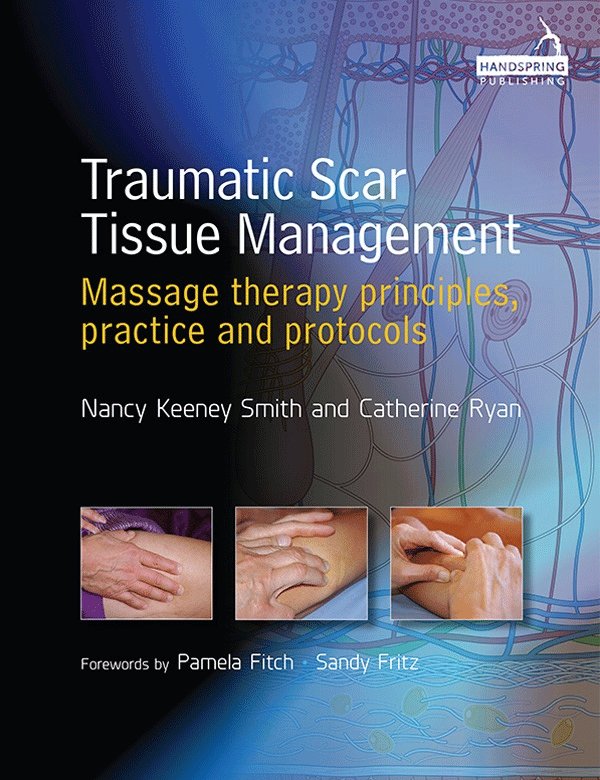Traumatic Scar Tissue Management
Therapeutic massage principles, practice and protocols
- ISBN: 9781909141223
- 2016, 296 pages
59,95 €
incl. VAT
plus shipping costs
Depending on the delivery address VAT may vary at checkout.
Delivery time: ca. 5 - 10 Tage/days
Description
The management of scar tissue is a huge and growing problem for massage and other manual therapists.
Many are afraid to deal with it but research has showed that appropriate massage
treatment can have significant results both physically and psychologically.
Existing books have chapters on the problem but there is no practical manual
available on the subject at the present time which tells the therapist what to do (and what not to do).
This book fills that gap, explaining the physiologic and pathophysiologic background,
and providing practical guidance about how to help patients.
Table of Contents:
Forewords by Pamela Fitch and Sandy Fritz.
1. Introduction
What if
the Value of Early Intervention
What Defines Traumatic Scarring How they Differ from Other Scars
Reverence for the Person [emotional and physical being]
Why Isnt Massage Therapy More Accessible for Those in Need?
The Quest for Scientific Data to Support What is Happening in the Tissue and the Effects of the Work
Reverence for the Heart and Science of the Work
2. Scars: Adversary or Ally?
Basic Skin and Fascia Histology
How the Body Responds to Injury [basic process/physiology, purpose, strength and matrix of healthy scar formation]
Scars are Not Surface Dwellers The Dermis and Beyond [what is happening beneath the surface]
What Constitutes and Contributes to Healthy and Unhealthy/Problematic Scars
Types of Abnormal Scars [hypertrophic, keloids, contracture and burns]
3. The Lymphatic System
Basic Lymphatic System Anatomy & Physiology
The Lymphatic Systems role in healing and scar formation
How the Lymphatic System Heals
4. The Nervous System
Basic Nervous System Anatomy & Physiology
The Nervous Systems Role in Healing and Scar Formation
Comparisons of Depth of Scar Tissue and Nerve Insult
Types of Pain [acute, chronic and the Effects of amyelinated Nerve Cells and Phantom Pain]
How the Nervous System Heals
5. Burns, Mastectomy and other Traumatic Injuries
A Deeper Look at Hypertrophic and Keloid Scars
How Tacked-down Scar Tissue Effects the Body [functional impact on various tissues and organs]
Anecdotal Evidence From a Clinical Perspective
6. Trauma the Physical and the Emotional
The Effects of Trauma on the Tissues
The Cortisol Dump and Other Brain Mediated Chemical Reactions
Brief Over-view of the Inflammatory Process [acute and chronic]
The Psychological Impact
7. Traumatic Scars and Massage Therapy
What Our Hands Can Effect
Appeasing the Amplified [SNS distress, central/peripheral sensitization]
Diluting the Soup [inflammation]
Un-sticking the Stuck [fibrosis, contracture]
8. In the Treatment Room On the Table
Connecting the Dots Putting it all Together
Assessment/Evaluation [how to use pressure scales to help guide the therapist, tissue excursion]
Treatment Protocols
Guidelines for Different Depths of Scar Tissue
Critical Thinking [staying flexible in the approach & making informed decisions]
Safety, Precautions and Contraindications
9. Communication is Key
The Power of Hope the Power of Words [communicating with the client, Foley Poem]
Ethical Considerations [patient-focused care, boundaries]
Interprofessional Communication and Collaboration
10. The Road to Recovery and Restoration
Stories From the Other Side of the Table The Clients Perspective
From the Therapists Perspective Clinical Experiences
11. Beyond the Table
Client Self-Care
Therapist Self-Care
12. Appendices
A: Glossary of Terms,
B: FAQs,
C: Research Resources,
D: Communication and Psychological Support Resources
Including about 55 illustrations.
Author


